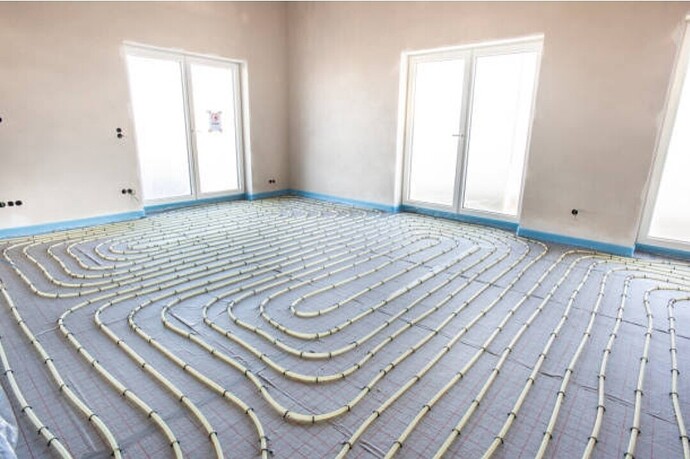Home renovation is no longer just about improving aesthetics—it’s also about comfort, energy efficiency, and luxury. One renovation trend that checks all three boxes is heated flooring. Known as radiant floor heating, this upgrade transforms everyday living by keeping floors warm, eliminating drafts, and distributing heat evenly throughout a room.
How Heated Flooring Works
Heated flooring systems typically use either electric coils or hydronic (water-based) tubing installed beneath the flooring surface. These systems radiate warmth upward, heating not just the floor but the entire room. Unlike traditional forced-air heating, radiant floor systems don’t blow dust or allergens around, making them an excellent option for people with allergies.
Benefits of Heated Flooring
One of the most appealing advantages of radiant floors is consistent comfort. No more stepping onto icy tiles in the bathroom or kitchen during cold mornings. The system warms surfaces evenly, preventing cold spots common with radiators or vents. Heated flooring is also energy-efficient, as it operates at lower temperatures while still delivering the same level of warmth, often reducing heating costs over time.
Ideal Rooms for Installation
Bathrooms and kitchens are the most popular spaces for heated floors, given their tile surfaces and frequent barefoot traffic. However, the system works equally well in bedrooms, living rooms, or even basements where concrete flooring tends to feel cold. Modern systems are versatile and can be installed under tile, hardwood, laminate, or even carpet with the right preparation.
Installation Considerations
Installing heated flooring is easiest during major renovations or new construction since it requires access beneath the flooring surface. Electric systems are generally simpler and less expensive to install, making them ideal for single-room projects. Hydronic systems, while more complex and costly upfront, are highly efficient for whole-home installations and work well with sustainable energy sources like solar panels.
Cost vs. Value
The cost of radiant floor heating varies widely based on the system type, room size, and flooring material. While the initial investment may be higher than traditional heating, the long-term value is substantial. Not only does it improve comfort, but it can also increase home resale value. Prospective buyers often see heated floors as a luxury feature, particularly in colder climates.
Maintenance and Longevity
One of the overlooked benefits of heated flooring is its durability. Once installed, these systems require minimal maintenance and can last decades without issues. Unlike furnaces or radiators that need regular servicing, radiant floors are largely self-sufficient.
Final Thoughts
Heated flooring systems offer an unmatched combination of luxury, energy savings, and long-term reliability. They are especially appealing for homeowners looking to upgrade their comfort while also making a smart investment in their property. Whether you’re renovating a single bathroom or designing an entire home, radiant floor heating is a modern solution that brings warmth—literally and figuratively—into ev
eryday living.

